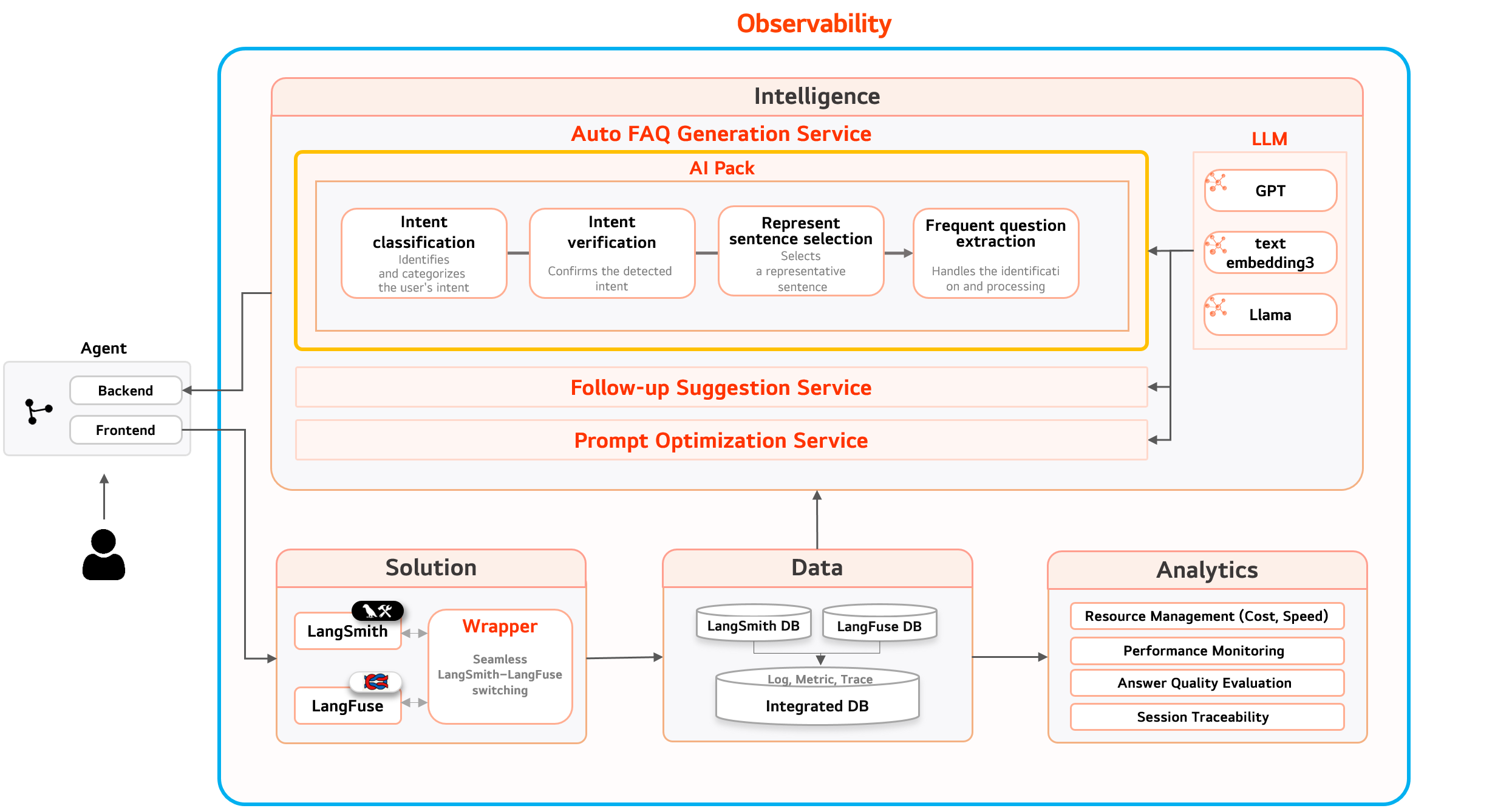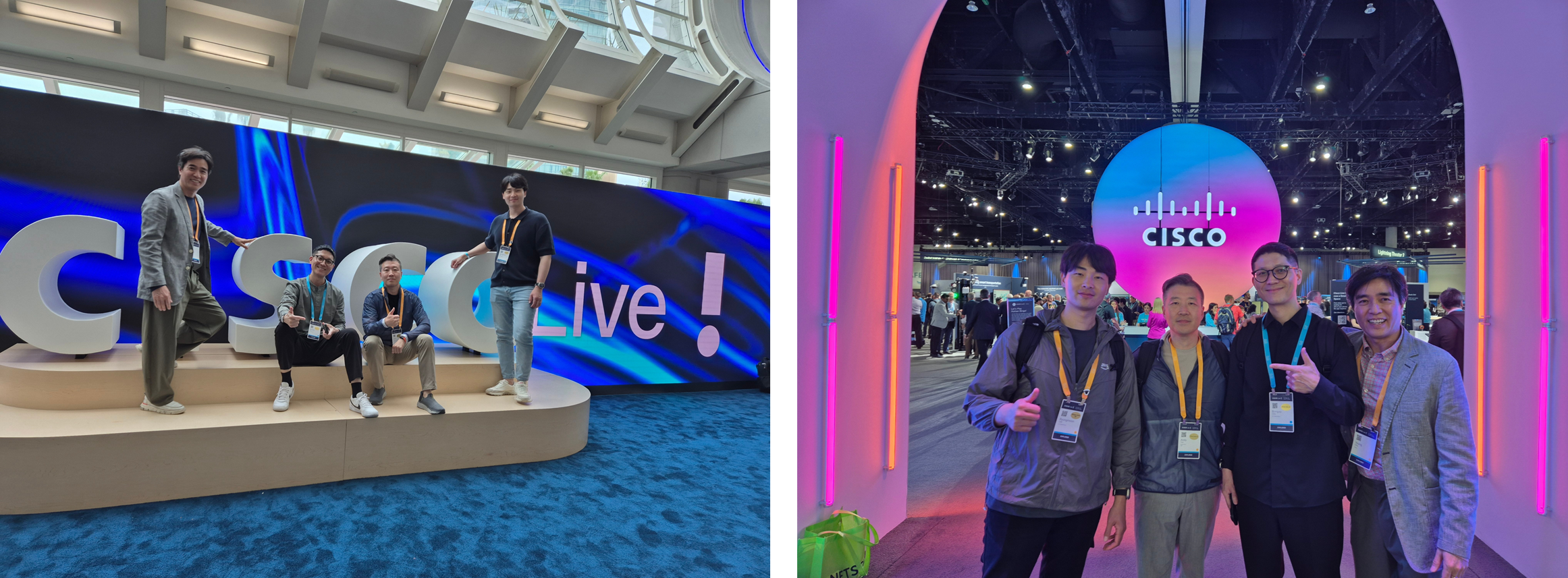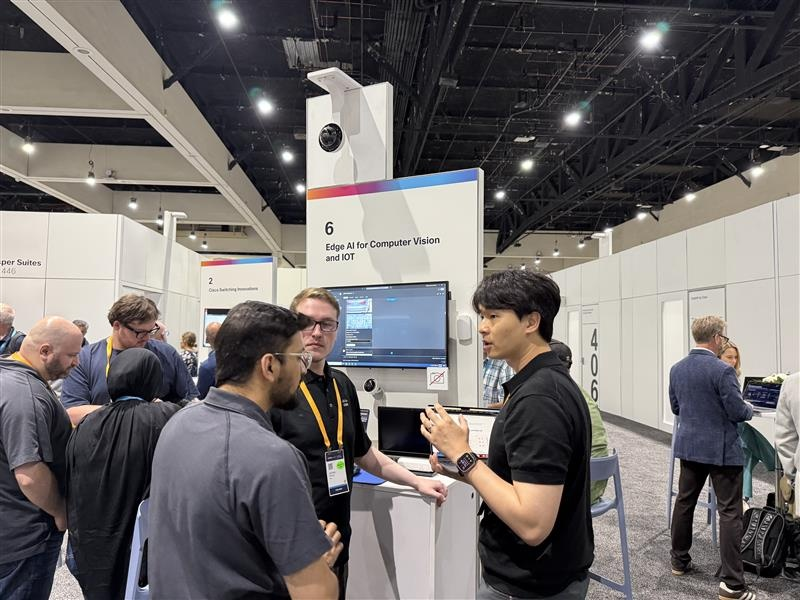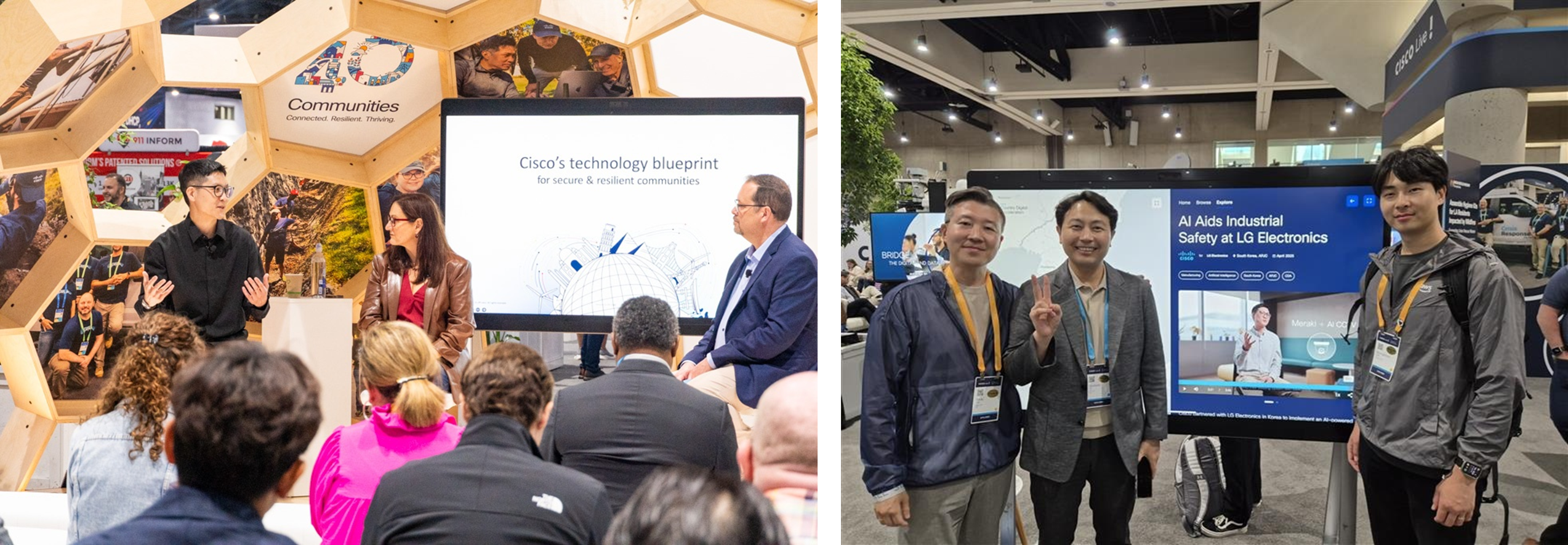Background
Meraki’s Cloud-Managed Service already boasts an exceptional infrastructure. If a variety of third-party apps, particularly AI-based services, could seamlessly integrate with this cloud platform, the true potential for enhancing Meraki’s value could be realized.
Currently, Meraki Cloud includes an App Store with some available apps, but it faces clear limitations:
- Integration with Meraki Cloud Services
- App installation and deployment are restricted. Only select partners can officially register apps, and the installation process is complex or not automated.
- Third-party apps are not fully integrated with the Meraki Dashboard, leading to fragmented user experiences or dispersed management points.
- Limitations in APIs and SDKs hinder sufficient integration and scalability with external services.
Upgrading Meraki Cloud to the next level and establishing best practices for a third-party app ecosystem make the integration of Meraki Smart Camera with mellerikat EVA a highly significant case study.
Understanding Meraki Smart Camera & Cloud
Meraki Smart Camera and Cloud form an outstanding service combination. Far from being a simple CCTV, Meraki Camera aims to be a smart video platform organically integrated with network and security infrastructure.
Key Features of Meraki Camera
-
All-in-One Structure
Meraki Cameras have built-in storage (SSD or SD card), eliminating the need for a separate Network Video Recorder (NVR), and support Power over Ethernet (PoE) for power and network connectivity.
-
Cloud-Based Management
All configuration, operation, and maintenance are centrally managed through the Meraki Dashboard (web-based UI), enabling real-time monitoring and configuration changes without on-site visits.
-
Intelligent Analytics
Features like motion-based event detection, person detection, and area-specific analytics (e.g., heatmaps, dwell time) provide insights beyond basic surveillance for spatial operations.
-
End-to-End Security
Stored video data is encrypted during transmission and managed under Cisco Meraki’s security framework, with user role-based access control and audit logs.
Core Value of Meraki Camera Cloud
-
Centralized Management
Cameras installed worldwide can be managed from a single Meraki Cloud, ideal for large-scale, multi-site enterprises or global chains.
-
Instant Video Access
While videos are stored locally in the camera, they can be streamed quickly via the cloud anytime, anywhere, with fast and intuitive event or time-based searches.
-
Smart Search and Analytics
Timeline-based motion searches, person detection-based searches, and cross-camera event tracking significantly reduce the time needed to review footage.
-
Hardware Maintenance Efficiency
Camera firmware updates are applied automatically, and alerts for anomalies or failures enable proactive responses.
True Smart Meraki Camera
Despite this robust infrastructure, it’s time to consider the next step: delivering True Smart value to customers.
- Cameras should recognize and deeply understand a wider range of scenarios.
- They should enable user-customized scenario recognition and automatically execute desired follow-up actions based on recognized information.
- Data movement, storage, and utilization systems should be optimized to enhance cost efficiency.
These processes should be easily managed and controlled using Large Language Models (LLMs).
For example, cameras could automatically detect specific events (e.g., hazardous situations, congestion, VIP visits) and trigger actions like notifications, automatic door opening, or lighting control. AI could also recommend or optimize video data storage and transfer policies. With an LLM-based natural language interface, queries like “Tell me about the customer who stayed the longest in the store today” can be handled effortlessly.
mellerikat EVA + Meraki Camera
To realize the True Smart vision for Meraki Camera, we propose mellerikat EVA, a Vision AI solution offering the following services.
Features and User Service Scenarios of Meraki + EVA
-
Real-Time Advanced AI Analytics
EVA analyzes video feeds from Meraki Cameras in real time, providing services like person, vehicle, and object recognition, behavior analysis, and hazard detection.
-
Cloud-Based Seamless Deployment
AI capabilities can be activated instantly through integration with Meraki Cloud, without additional hardware.
-
Customized User Services
Users can easily define desired events (e.g., intrusions in specific areas, queue length, customer behavior patterns), and EVA automatically recognizes and provides alerts for them.
-
Demo Scenario
For instance, when store congestion increases, EVA can automatically notify the manager and trigger synchronized lighting or audio announcements, enabling immediate operational applications.
mellerikat EVA
EVA is a powerful technical platform for AI services, integrated with various mellerikat technology components.
Technical Strengths of the Backend
-
Modular AI Engine
Supports flexible combinations of AI modules for object detection, behavior recognition, face/license plate recognition, and more.
-
Continuous High-Quality Service
Easily deploys and utilizes new models to consistently deliver high-performance services.
-
Auto-Scaling and Distributed Processing
Built on a cloud-native architecture, it automatically scales resources up or down based on video analysis workloads.
-
API/SDK-Based Scalability
Offers RESTful APIs, webhooks, and SDKs for seamless integration with external systems (ERP, POS, IoT, etc.).
-
No-Code/Low-Code Interface
Provides an intuitive UI, allowing non-experts to easily design and manage AI analysis scenarios.
The Importance of mellerikat EVA and Meraki Collaboration
EVA could partner directly with various camera vendors to provide services, operate as a cloud-based SaaS, or be offered through white-labeling with camera hardware vendors. It could also be installed in a vendor’s cloud or on-premises environment.
However, these approaches face challenges in achieving economies of scale during initial service setup and operations.
- Meraki already has a globally scaled cloud infrastructure and a large customer base.
- Combining Meraki Cloud with EVA enables immediate large-scale service launches and expansion without additional infrastructure.
- Leveraging Meraki’s App Store and API ecosystem automates EVA’s deployment, operation, and updates, maximizing customer accessibility.
- This collaboration eliminates cost barriers to adopting AI in cameras and positions Meraki and EVA to lead the global standard for Vision AI services.
Beyond AI
EVA aims to grow beyond providing AI functions into a technical platform that unlocks diverse possibilities through cameras (Vision).
- Users can train cameras to recognize desired scenarios.
- Recognized scenarios can trigger subsequent actions via the Meraki Control Plane (MCP).
- These processes are effectively managed on an integrated technical platform.
Human behavior can be simplified as “recognition → action,” occurring across physical channels on the organically connected platform of the human body. EVA is evolving to technically replicate such an organic platform.
EVA’s Vision: Becoming the AWS of the Smart Camera Market
EVA aims to transform the on-premises-centric CCTV market into a cloud-based service market. It envisions a future where numerous Vision sensors operate smartly on an interconnected platform, enabling sci-fi-inspired recognition-action scenarios to be implemented and integrated as services.






